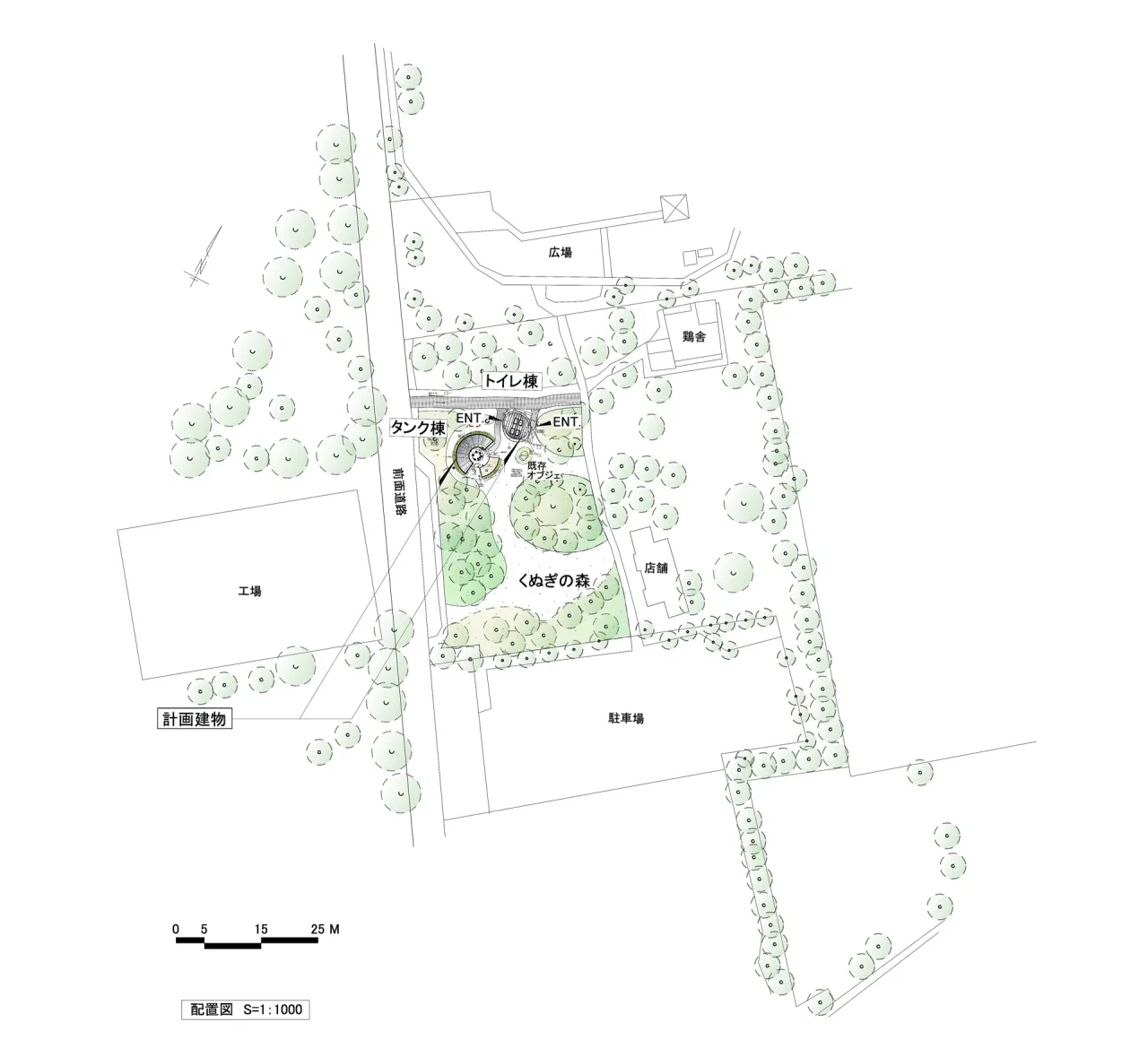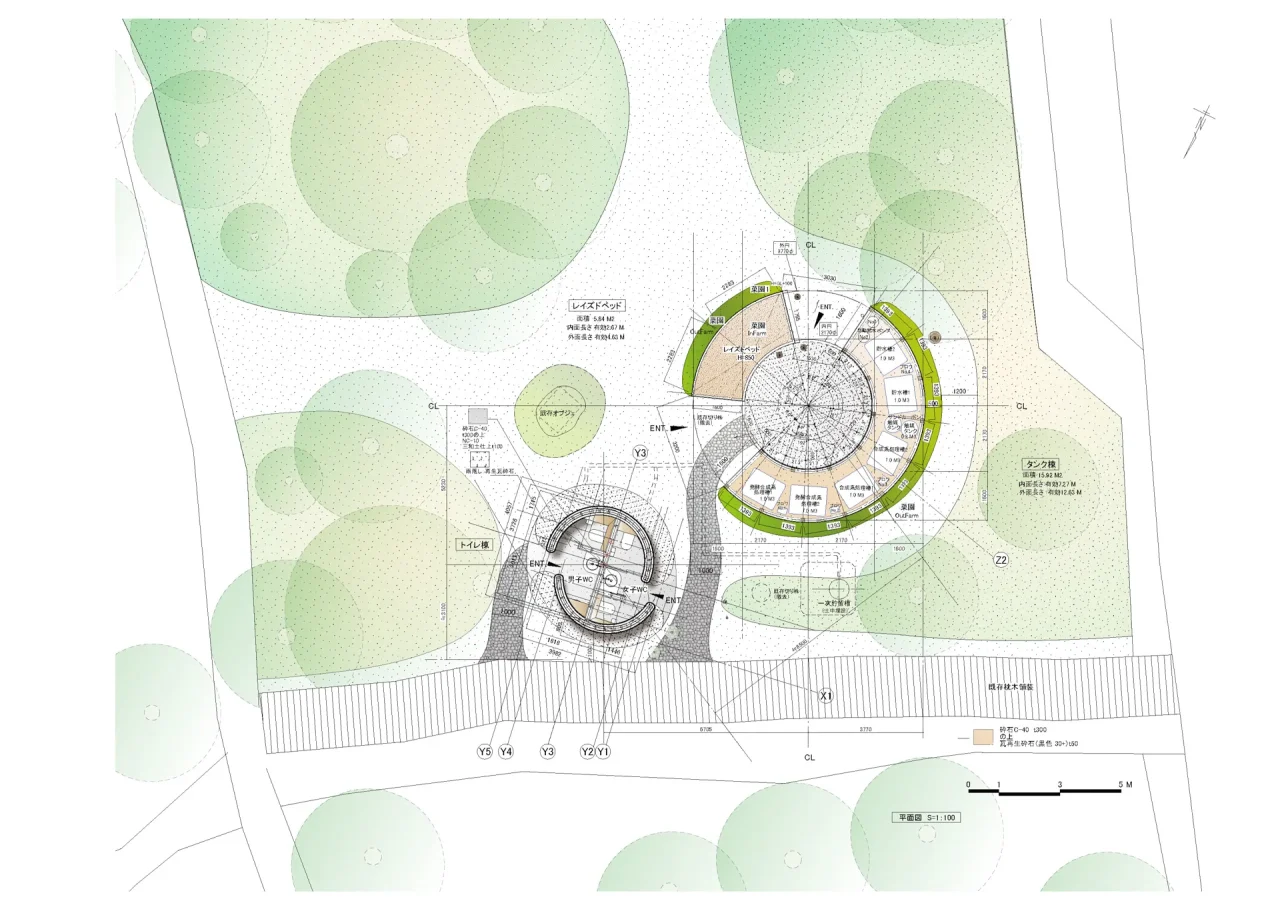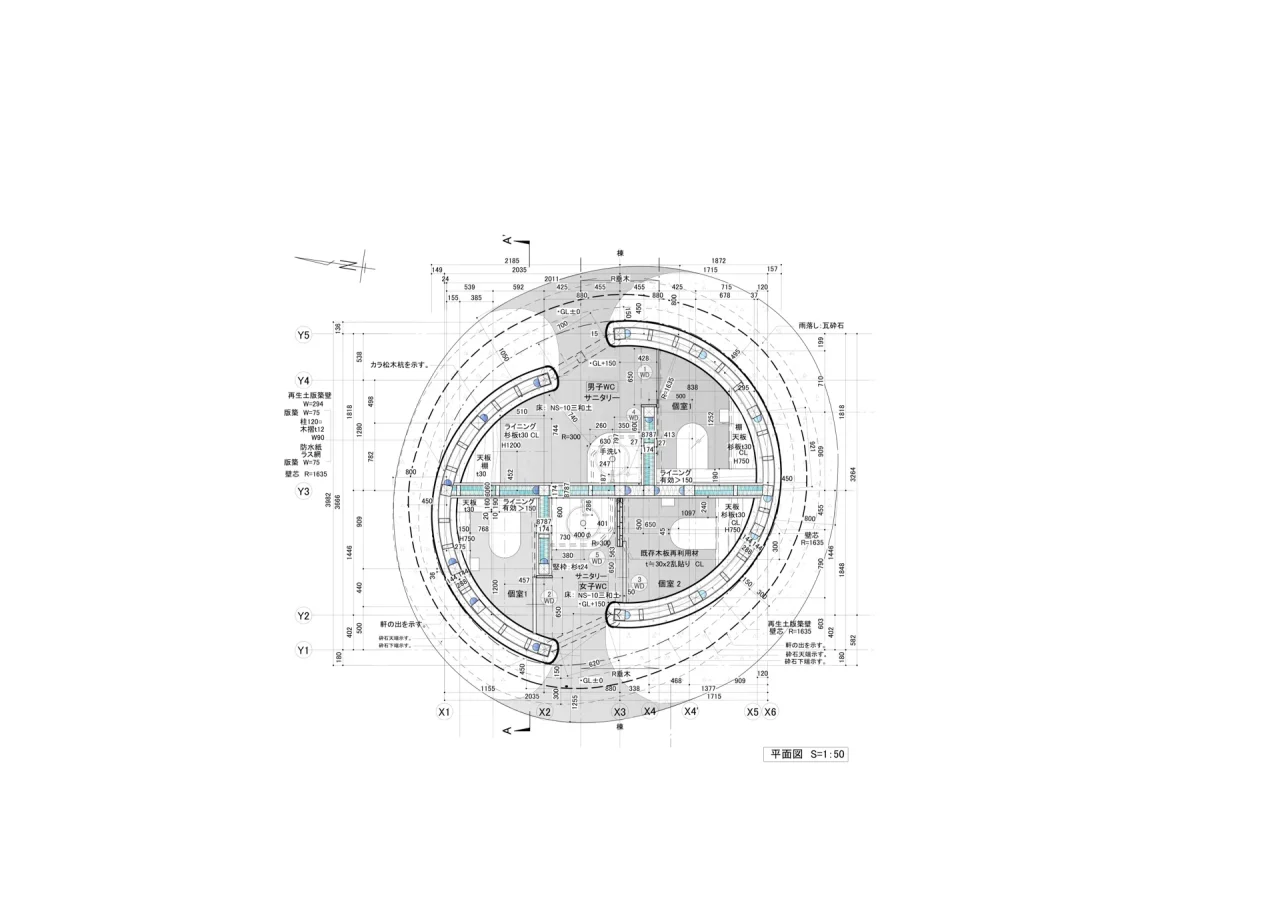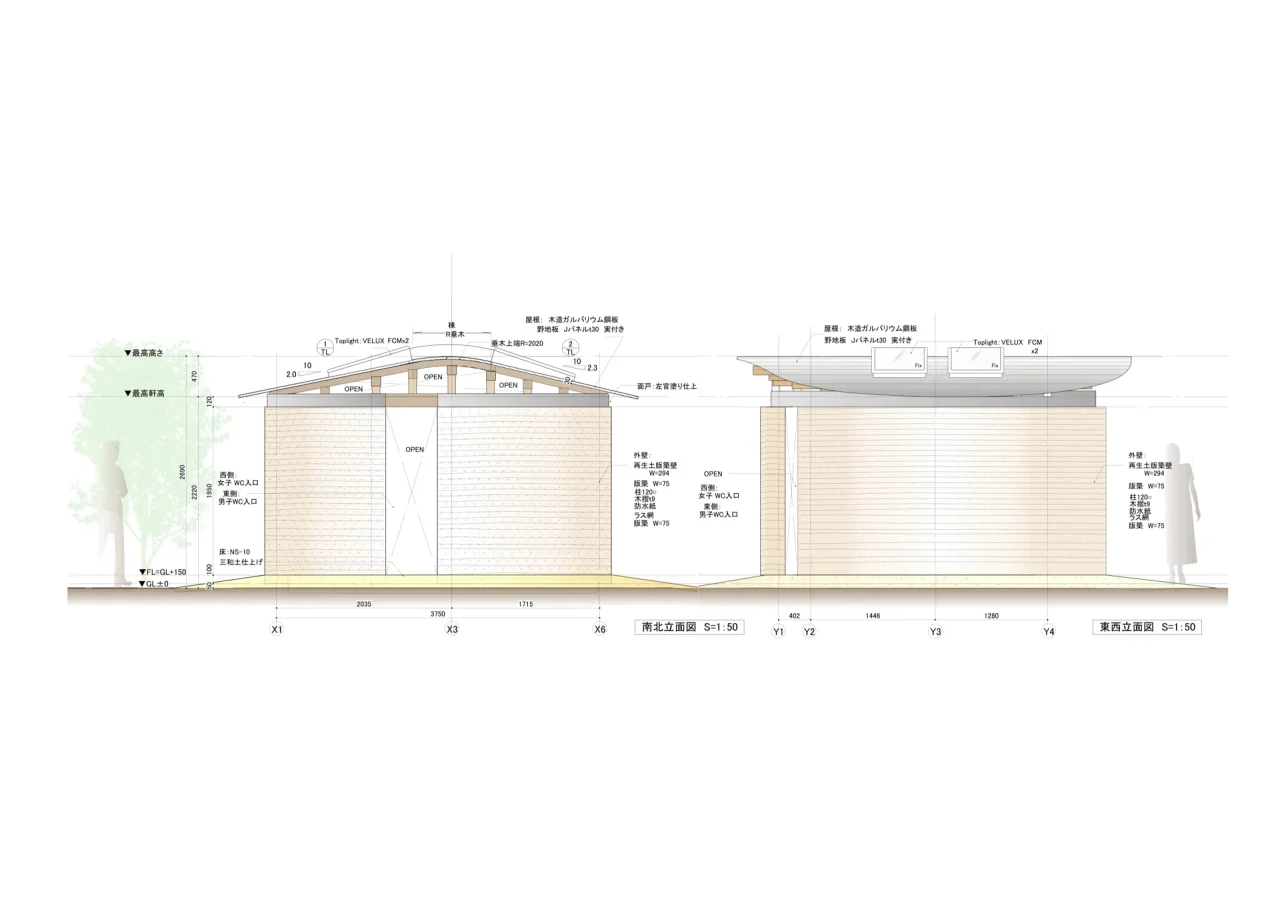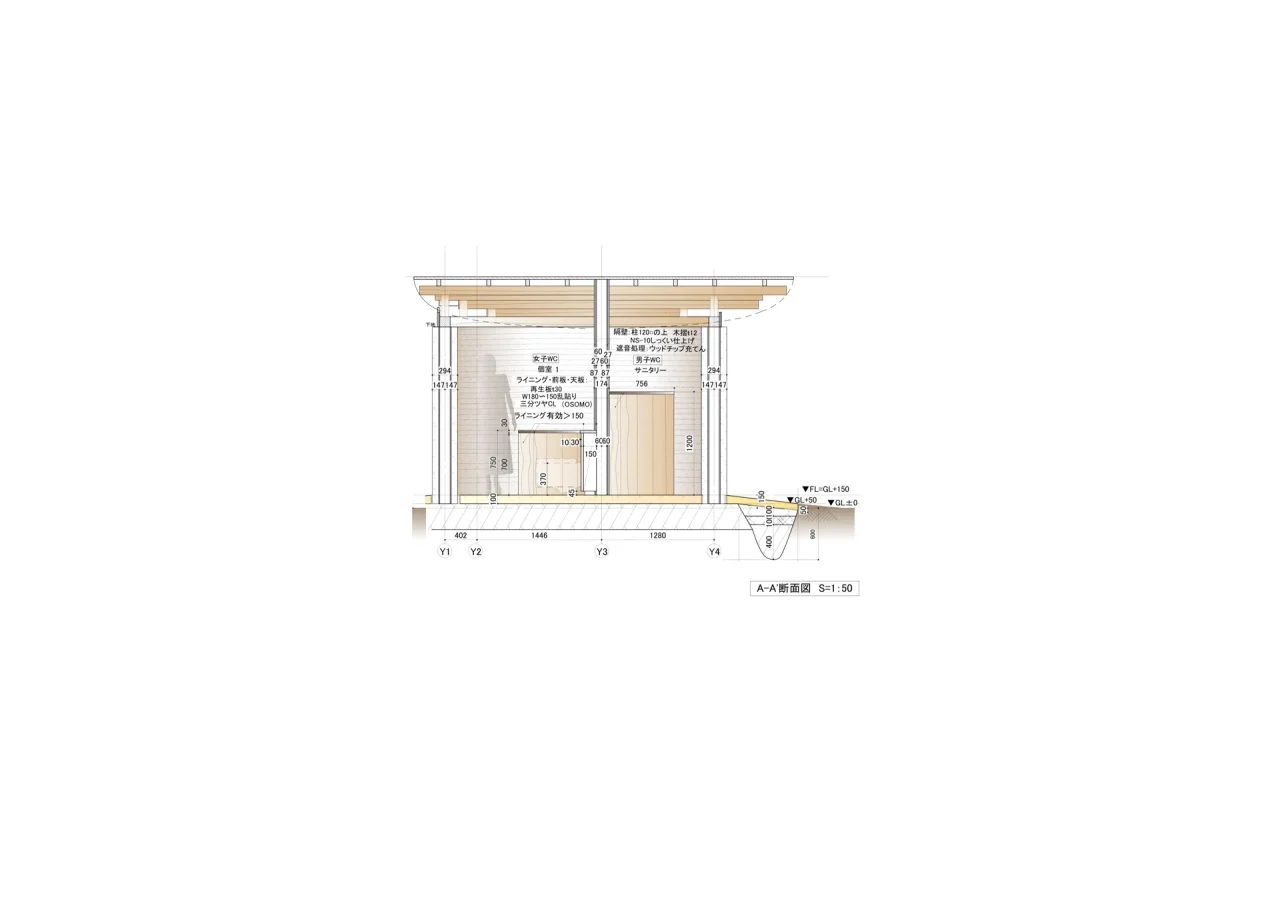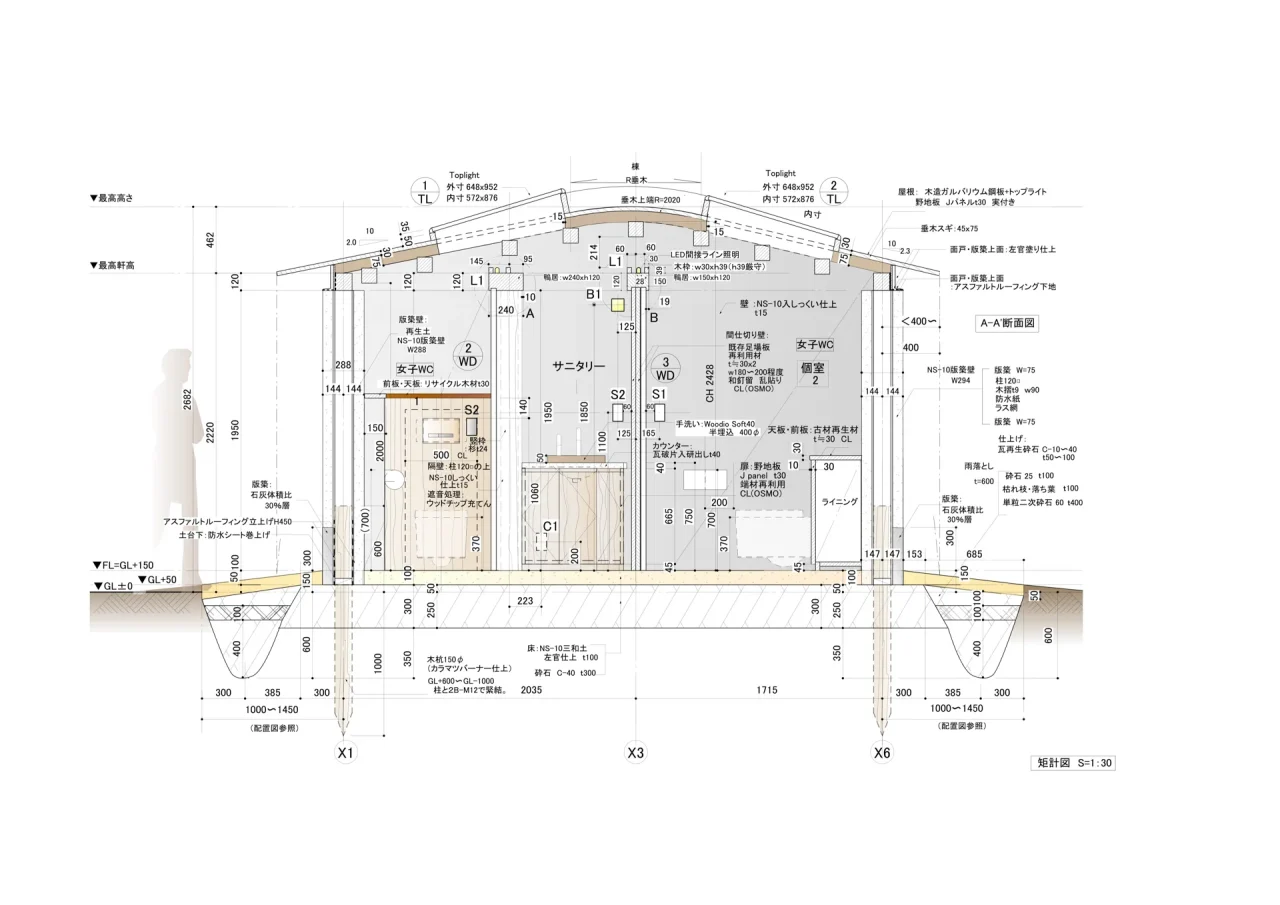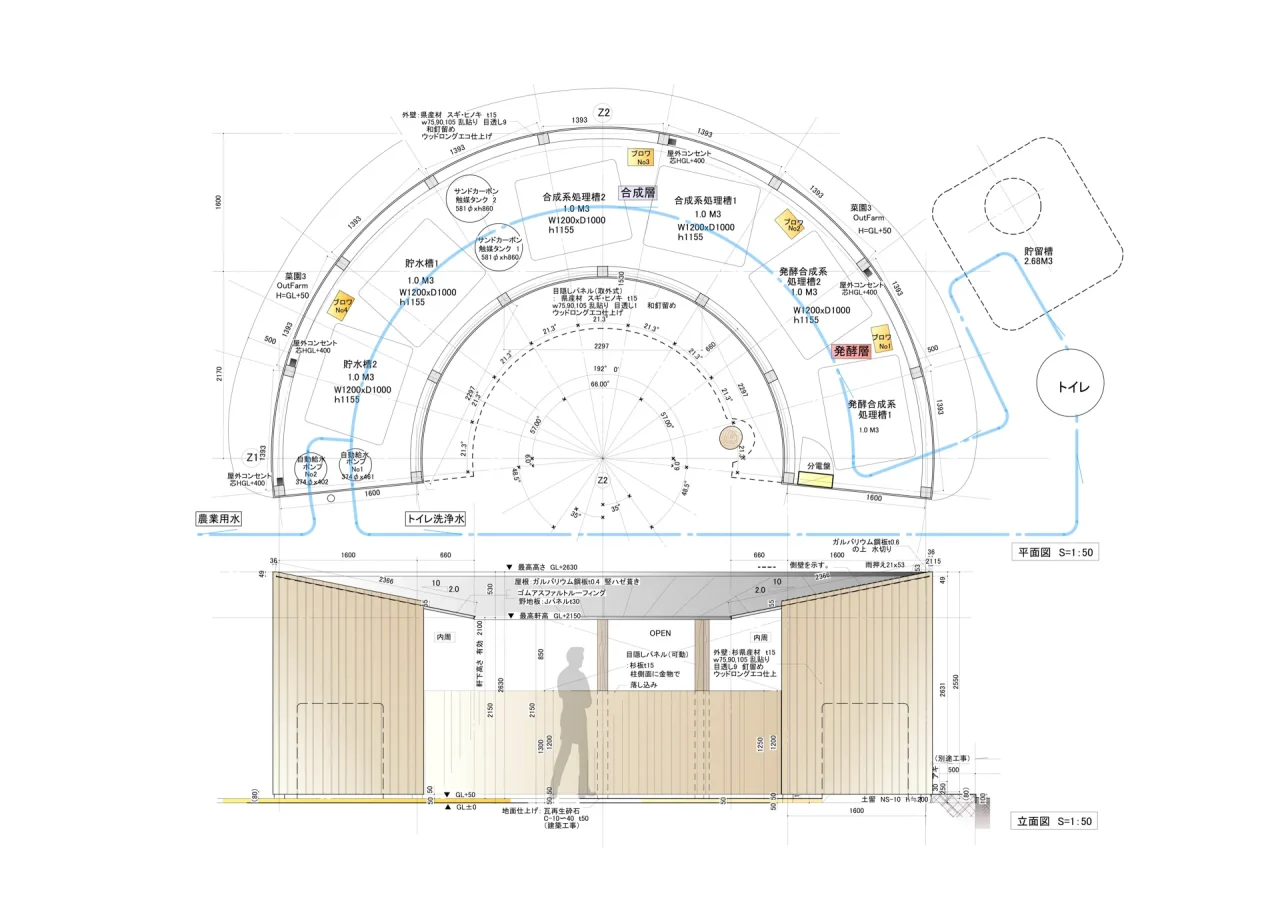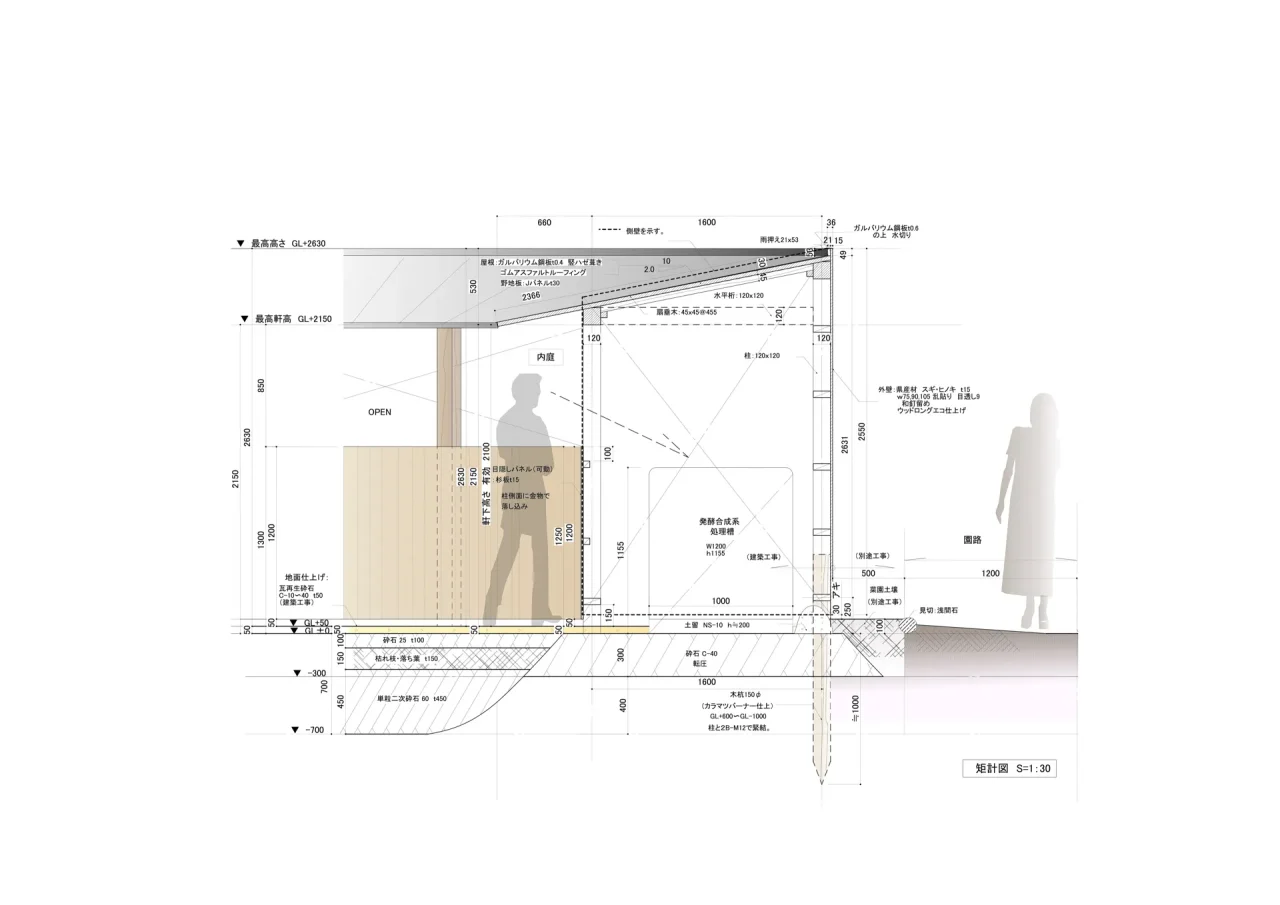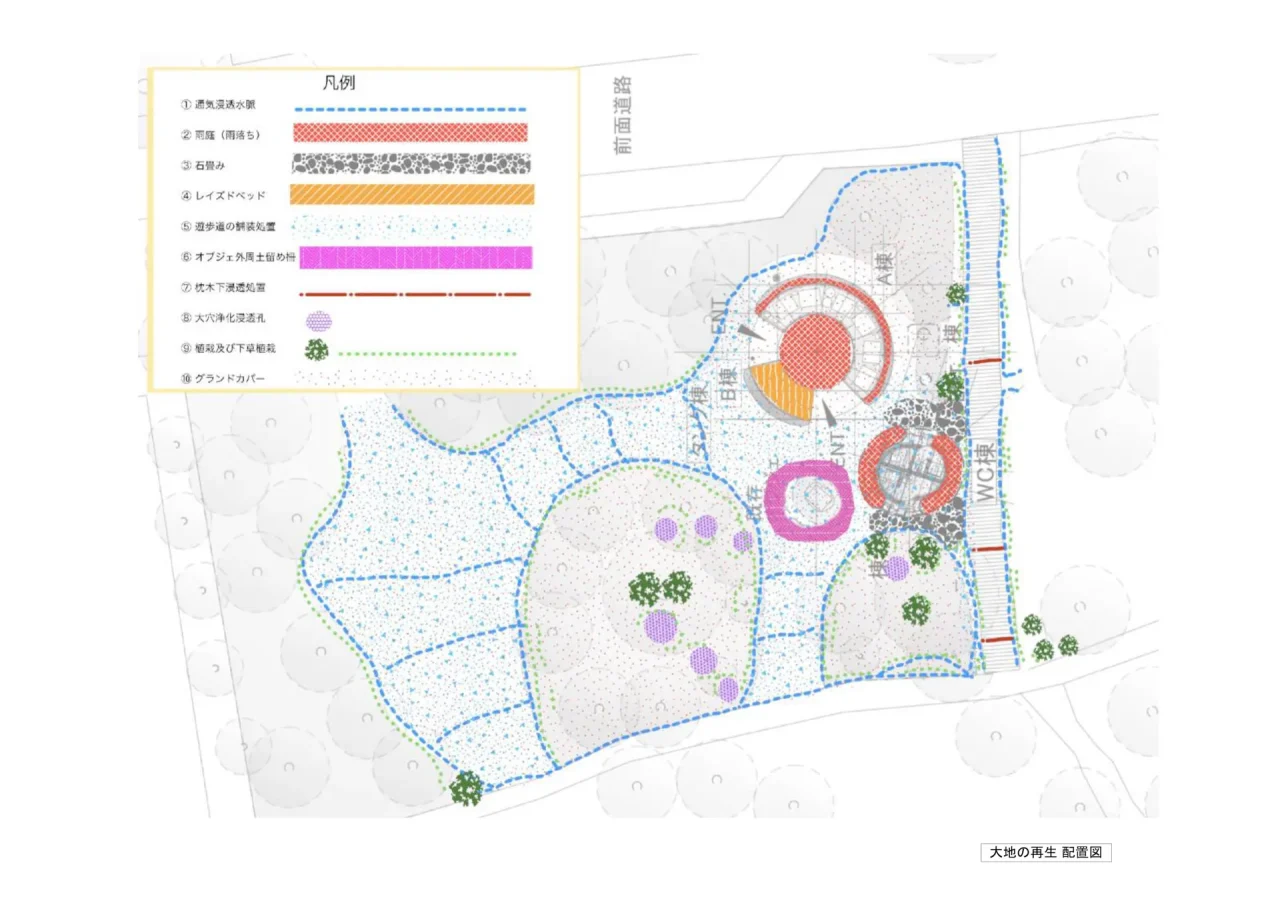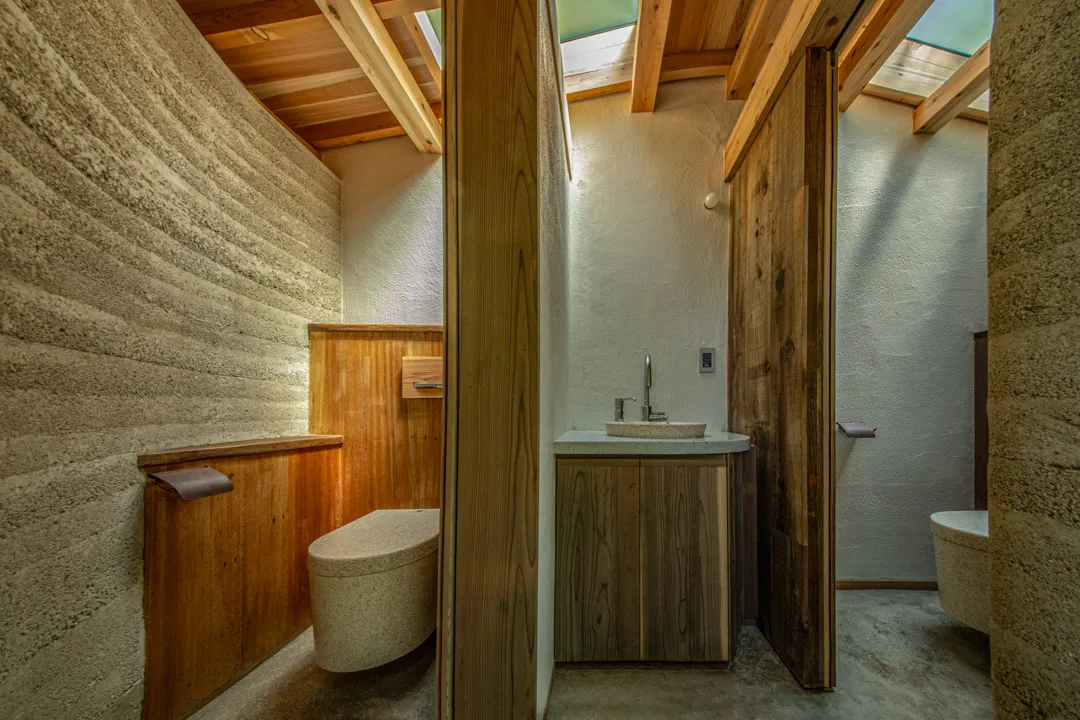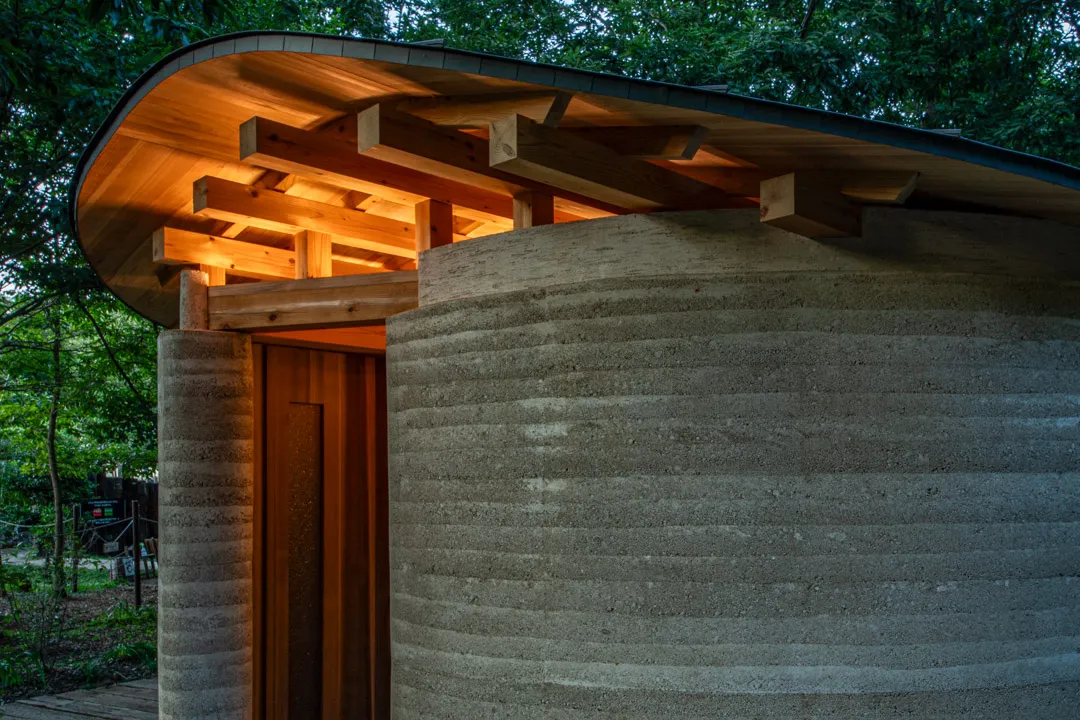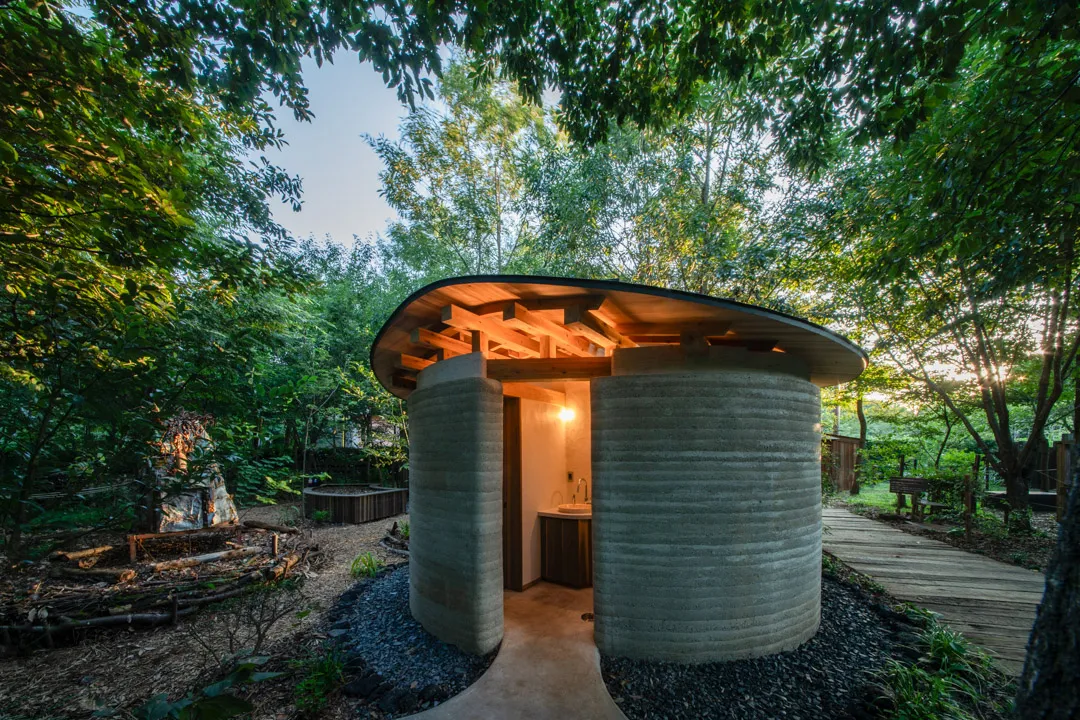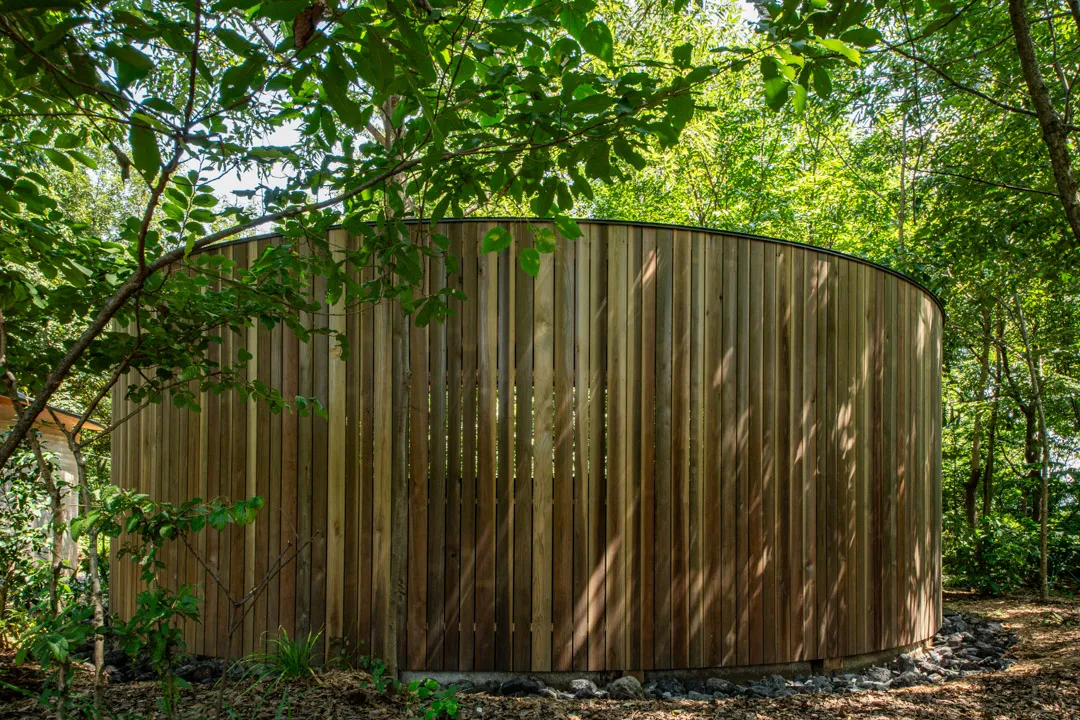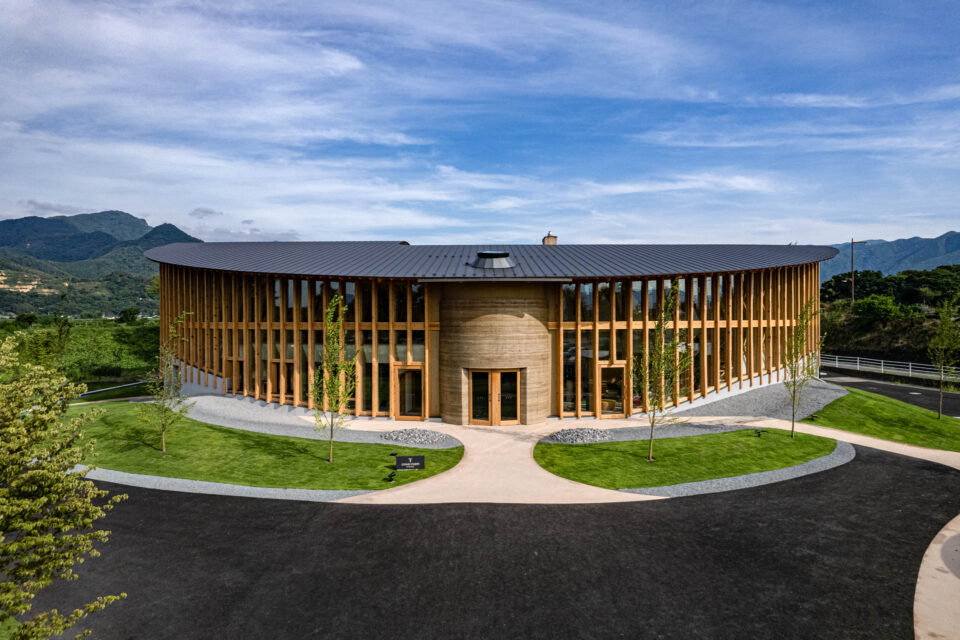TOILETOWA
Saitama、Japan 2023
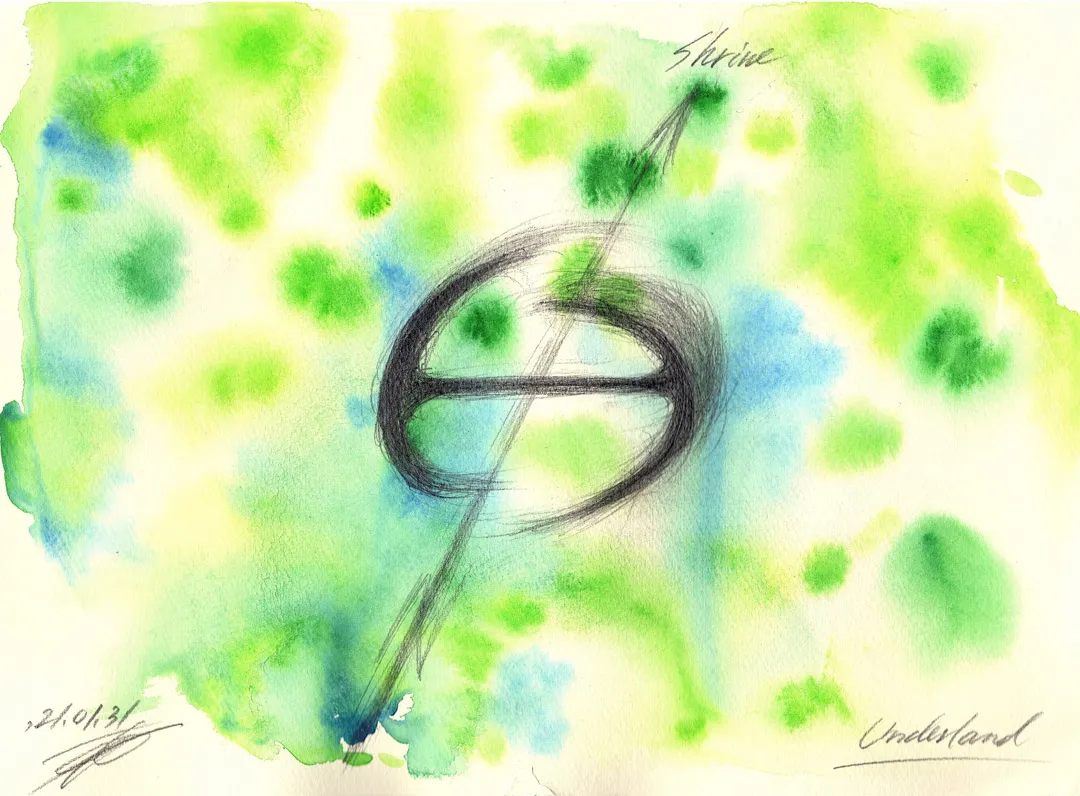
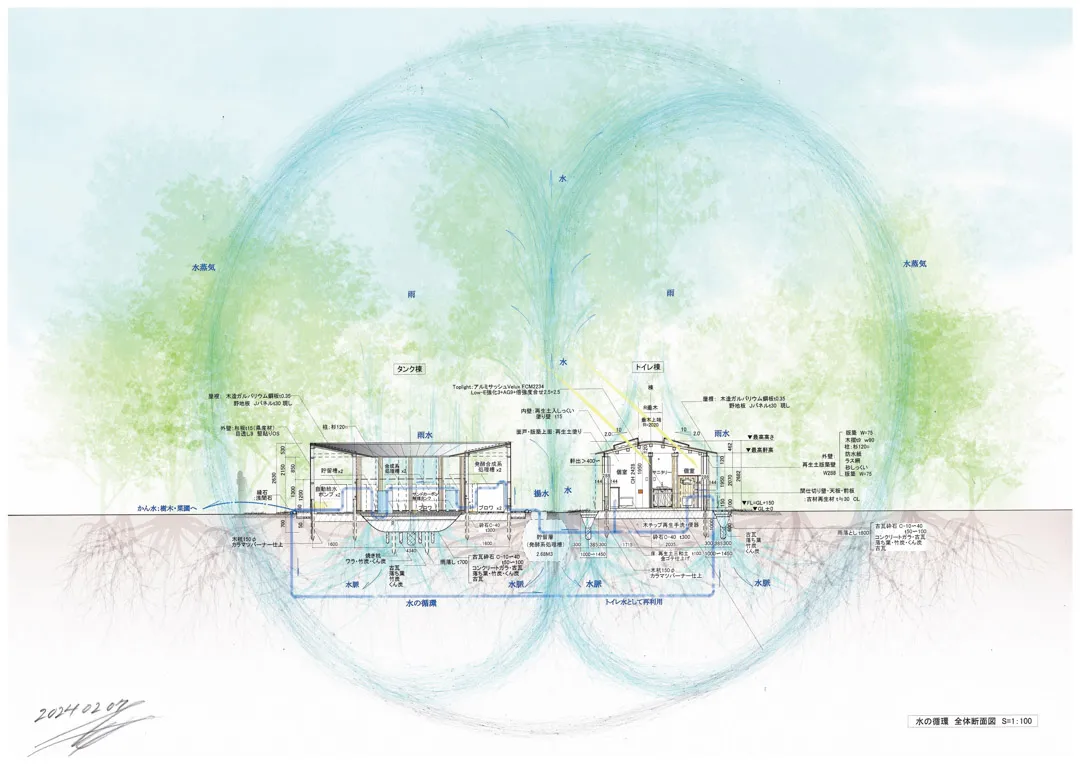
Design Concept
All existence is born from the earth and is a circle that returns to the earth.
TOILETOWA is an architecture of circulation and regeneration that makes this visible. More than just a toilet, it was built as an environmental education space attached to the headquarters of Ishizaka Corp in Oak Forest, which recycles industrial waste and serves as a model for a future waste-free, recycling-oriented society.
It is a wooden building consisting of a toilet building with a circular rammed earth wall made of recycled soil NS-10 developed by Ishizaka Corp,, and a tank building that shows the process of perfect recycling and circulating wastewater by combined fermentation of microorganisms.
To reduce the environmental impact, the foundation is made of crushed stone instead of concrete. – Made using wooden stakes. With the theme of recycling in the materials used, the interior walls and earthern floors of the toilet building are made of almost recycled materials of soil, wood, and glass. The hand wash and toilet bowls are also made of recycled wood chips.
Toilet wastewater is not only completely recycled and reused but also used as agricultural water to promote the growth of surrounding garden crops. Furthermore, by using natural materials around the building to “regenerate the earth” and allowing water and air to pass through the soil from the ground, the forest in the area has been regenerated, creating a refreshing air and atmosphere. The wooden construction was hand-carved by young carpenters, making use of plastering techniques such as rammed earth, plastered walls, hard-packed earthern floor, and mortar polishing counter, and not only the materials but also the circulation of traditional architectural techniques of wood and clay.
______
Photo, takeshi noguchi
Drawings, Tono Mirai architects
Toilet Building
Architecture that expresses the ecological circulation of water and air as well as materials and technology.
Most of the building is made from recycled materials and materials that “return to the earth” without using concrete.
Two semicircular rammed earth walls made of recycled earth placed in a staggered manner create a gentle movement and circulation within the forest, and the entire building acts as a well of light, connecting heaven and earth with light coming from the skylights. hook up.
NS-10, the main material used, is recycled soil jointly developed by the owner of the building, Ishizaka Corp. and IS Engineering. A mixture of gypsum board and soil brought to the company from demolished homes by house builders, separated and purified at the company’s factory. Until now, it had only been used as a roadbed material for pavement, but this is the first time it has been used as a building material.
Due to the lack of compressive strength, the rammed earth structure was not used as a stand-alone structure, but instead was used as a finishing touch for the wooden framework, and slaked lime was mixed and rammed together to create this rammed earth wall, with a total width of 294 mm, 75 mm each for the middle and outside. Not only that, but it is also used as plaster mixed with lime for partitions, and as hard-packed earthern floor. We tried the possibilities of recycled soil.


Tank Building
Cobined fermentation has been used in Japan for over 20 years, and here we aim to show the mechanism of water circulation in a sophisticated design as a showcase for the recycling society of the 21st century.
While retaining the existing trees, the complex fermentation process of the fermentation layer, synthesis layer, and catalyst tank is arranged in an arc, expressing the circulation of water with raised beds (three-dimensional vegetable garden) facing a circular courtyard.
In order to keep the overall scale down, the roof has a 2/10 slope on the courtyard side, and the tank can be seen by removing the blind door. The exterior wall is inspired by Local landscape of the forest(Musashino’s Satoyama), and is made of prefecture-produced cedar boards of different widths pasted randomly.
Wood Long Eco, a wood protectant derived from natural materials, is applied to each piece, and each piece changes to a different color as it ages with UV rays. Through the gaps between the boards, people can see sunlight filtering through the trees and see the actual forest, creating a landscape that blends in with the forest.
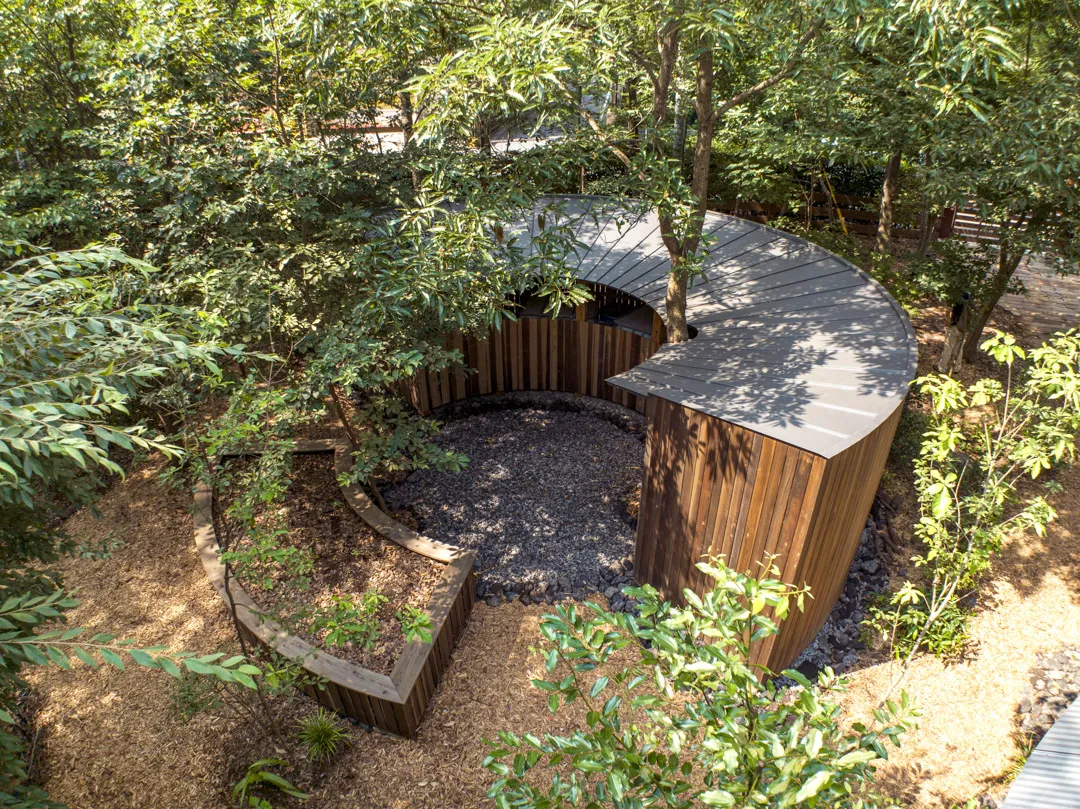
Combined fermentation system
A biotechnology called combined fermentation (EMBC) developed by Dr. Yasuhide Takashima is used to treat and regenerate this toilet wastewater. By allowing aerobic bacteria and anaerobic bacteria to coexist, co-prosperate, and coexist, changes in fermentation, decomposition, fermentation synthesis, and fusion occur, and the water is purified and contains zero bacteria, malignant bacteria, and E. coli, making it odorless. Clear enough to drink. The enzyme water created in this process circulates endlessly, and the water containing enzyme-bound crystals activates the soil and has the effect of improving crop productivity.
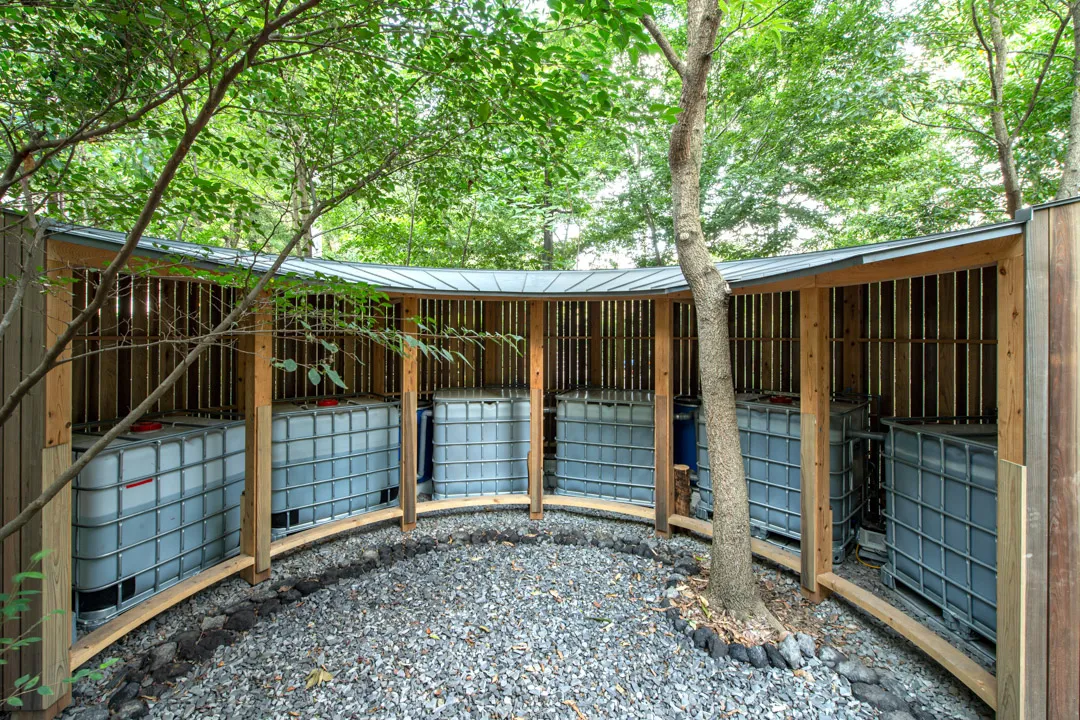
Regeneration of the earth
Along with the construction of this toilet, the surrounding forest and soil were weakening, so WAKUWORKS carried out work to “regenerate the earth” of the forest, centering on the toilet, as part of the work to regenerate the forest along with the exterior maintenance.
Plants and plant-derived materials that can be found on the site, such as tree branches, fallen leaves, bamboo charcoal, and charcoal, are buried vertically and horizontally in the soil to create water veins and air flow underground, which aggregates the soil. It activates the functions of the mycelium, root system, microorganisms, and living organisms in the soil, cultivating the inherent power of the soil.
Recycled crushed stone tiles were used to catch rain, and wood chips and lava stone Asama were used for the sidewalks. Through this work, the soil, which was hard and poorly drained, has been cleared of puddles, and as the trees have regenerated, there has been a refreshing breeze, and it is possible to feel that a circulation of water and air has been created in the forest: earth, wood, architecture, and earth.
Trees are also called “pillars of water,” and they absorb water from the water veins in the soil and emit water vapor from their leaves. Through this earth regeneration project, an invisible water cycle between the soil and the air was realized, and the forest ecosystem was regenerated along with the water cycle of the toilet’s complex fermentation.

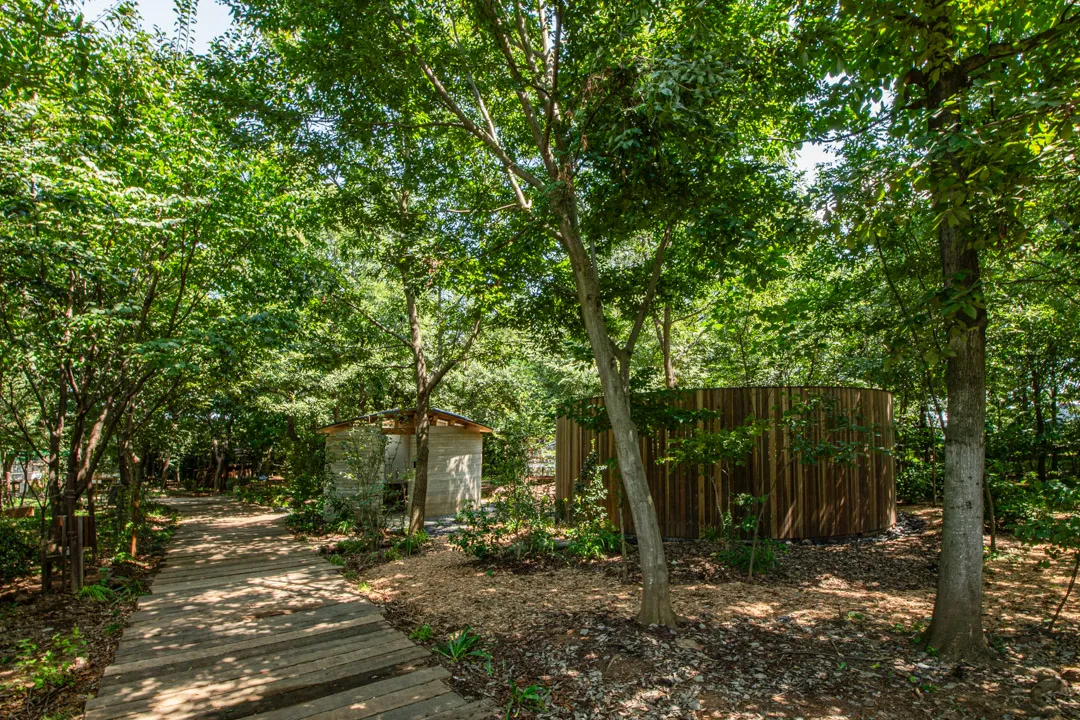
Media Link
■ TV Programs
NHK WORLD-JAPAN
New Public Restroom Designs
https://www3.nhk.or.jp/nhkworld/en/shows/2101024/
■ Architectural website in Japan
architecturephoto
https://architecturephoto.net/205035/
TECTURE MAG
https://mag.tecture.jp/product/20231012-100056/
■ International architectural website
ArchDaily
https://www.archdaily.com/1015881/toiletowa-wc-tono-mirai-architects
Archello
https://archello.com/project/toiletowa
gooood
https://www.gooood.cn/toiletowa-by-tono-mirai-architects.htm
Keywords
Bio toilet / Combined fermentation system / the recycling society / curve / Rammed earth / Sanwa soil / Mortar grinding / Wooden architecture
Project data
Title — TOILETOWA
Location — Miyoshi City Saitama Japan
Client — Ishizaka Corp.
Main function — Bio-toilet
Type of construction — New construction
Type of Site — Urbanization control area Park facilities
Design
Architect — Tono Mirai architects Tono Mirai
Equipment — GEN JAPAN, Marunaka Equipments
Supervision — Tono Mirai architects Tono Mirai
Naming Design: TSDO Taku Sato
Construction
Building — Terashima Corp.
Equipment — GEN JAPAN, Marunaka Equipments
Landscape — WAKUWORKS
Area
Site Area — Facilities in the park
Building Area — 9.9㎡
Floor Area — 9.9㎡
Building coverage ratio
Max height — 2.68m
Eaves height — 2.22m
Structure
Wooden 1st story
Foundation
Clasher run・Burned wood pile
Term
Design Term — Jan.2021-Mar.2023
Construction Term — Mar.-Aug, 2023
Finishing Materials
WC Building
Exterior Site — Crushed Tapanese roof tile、wood chips、lava Stone
Floor — Recycled Earth NS-10(ishizaka Corp) hard-packed earthern floor
Outside wall — Recycled Earth NS-10(ishizaka Corp) rammed earth t75
Roof — galvalume steel t0.35 Yodogawa seiko
Interior Wall — Recycled Earth NS-10(ishizaka Corp) lime plaster, Recycled wood board
Eaves ceilong — laminated wood panel t30, wood structure
Window — Toplight VELUX FCM
Toilet bowl — Woodio Wood block colour:Polar
Washing boul — Woodio Soft 40 colour :Polar
Fauset — SANWA AQUAPIA KT0721C
Tank Building
Exterior Site — Crushed Tapanese roof tile、wood chips、lava Stone
Outside and inside wall — cedar board t15 w75.90,105 in the region (Saitama pref,) wood protection paint made from herb.
Roof — galvalume steel t0.35 Yodogawa seiko
Roof — galvalume steel t0.35 Yodogawa seiko
Eaves ceilong — laminated wood panel t30, wood structure
Combined fermentation equipment design and equipment — Takashima Engineering Develpment
